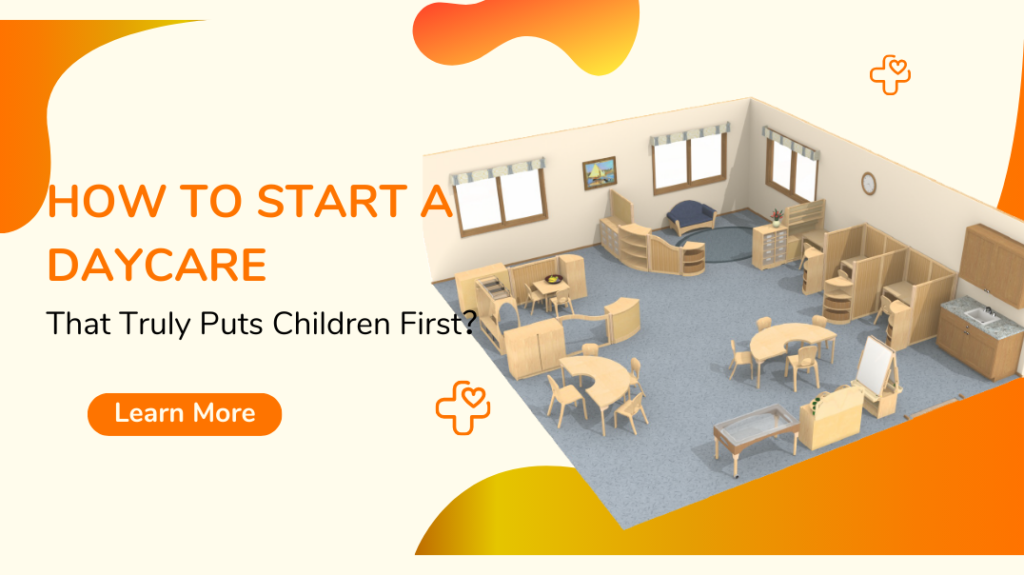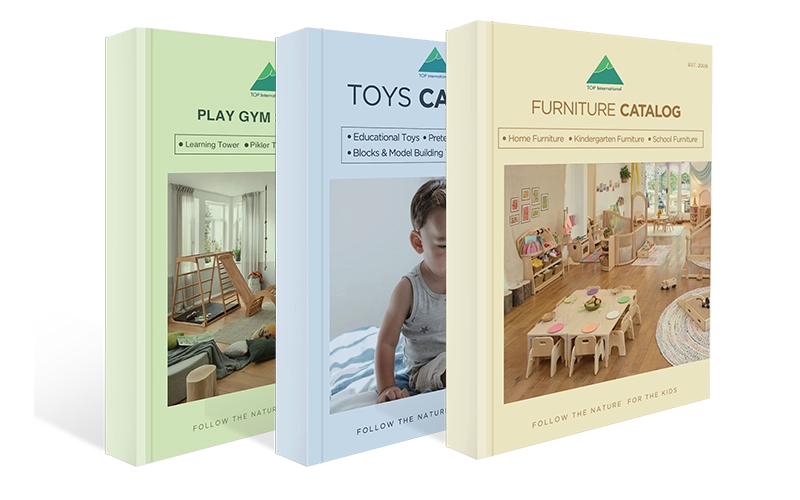Are you wondering how to start a daycare that goes beyond basic care? Do you dream of building a nurturing space where children feel safe, loved, and empowered to grow? What does it really take to prioritize kids’ well-being in every decision you make?
Learning how to start a daycare that truly puts children first involves more than licenses and furniture—it’s about building a child-centered environment. When done right, starting a daycare can help children develop stronger emotional intelligence, feel secure in daily routines, and thrive through purposeful play. A child-first daycare supports healthy development and sets the foundation for lifelong learning.
Keep reading to discover the key steps, tools, and values that will help you launch a daycare where children come first—every single day.
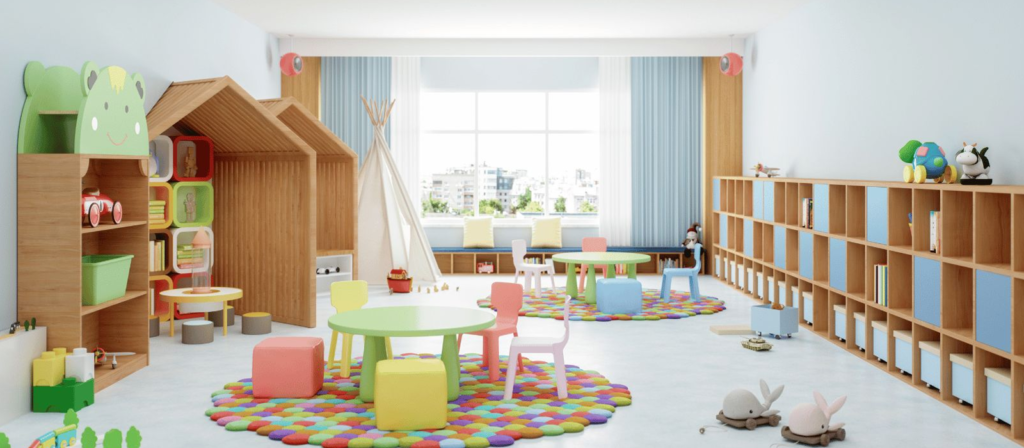
Why Start a Daycare?
If you’ve ever asked yourself how to start a daycare, you’re likely motivated by more than just income. Starting a daycare is not only a rewarding business opportunity—it’s also a chance to make a lasting impact on children, families, and your community. Here’s why launching a child-centered daycare can be one of the most meaningful ventures you pursue.
Make a Lasting Impact on Early Childhood Development
One of the most fulfilling reasons to start a daycare is the opportunity to influence early childhood development in a positive and powerful way. The first few years of a child’s life are critical for cognitive, emotional, and social growth. When you offer a safe, loving, and stimulating environment, you help children learn how to express themselves, solve problems, build friendships, and explore the world with confidence. By placing children’s needs at the center of your approach, your daycare becomes a foundation for lifelong learning and success.
It’s a Business That Aligns with Passion and Purpose
For people who genuinely love children and value early education, understanding how to start a daycare that aligns with your values can be life-changing. Running a daycare allows you to design a space filled with warmth, creativity, and opportunity. You can create daily routines that encourage play, exploration, and learning while staying emotionally connected to each child. This is not just work—it’s meaningful, fulfilling, purpose-driven entrepreneurship. Few businesses allow you to witness the transformation of a child’s life day after day. When your daycare is rooted in love and learning, your work gains deep personal and social value.
Serve Families and Strengthen Your Community
Starting a daycare allows you to become a trusted partner to families. Parents want more than just supervision; they’re looking for caregivers who truly care. When you put children first and communicate openly with parents, you build a strong reputation that benefits everyone involved. Your daycare becomes more than just a service—it becomes a vital part of the community, offering support, consistency, and a safe haven where children can flourish. Over time, families will see your daycare not just as a childcare provider, but as an extension of their own support system. You’ll foster deeper relationships, create a network of referrals, and contribute to a more connected, resilient neighborhood. In this way, learning how to start a daycare becomes a step toward building something far bigger than yourself; it becomes a legacy rooted in trust, compassion, and care.

Here Are Some of the Benefits of Daycare
Understanding the benefits of daycare is essential for anyone learning how to start a daycare. While the primary goal is to provide a safe space for children while their parents are at work, a high-quality daycare offers far more than just supervision. It becomes a place where children build foundational life skills, emotional resilience, and intellectual curiosity. Let’s explore the key benefits in greater depth.
Benefits for children:
- Enhanced Social Development: Children in daycare environments learn how to interact with others, build friendships, and resolve conflicts. These daily social experiences help shape their ability to share, listen, and work within a group—skills that are essential for later academic and social success. A daycare that encourages positive peer interaction creates a nurturing community that mirrors real-world relationships. If you’re learning how to start a daycare, fostering social confidence should be part of your core approach.
- Improved Cognitive Development: Daycare settings provide structured learning opportunities through play, storytelling, and routine. These activities enhance language skills, memory, and early problem-solving abilities. Exposure to varied learning stimuli accelerates cognitive growth during a child’s most formative years. When planning how to start a daycare that delivers lasting value, including cognitive-rich play and guided learning is a powerful investment in each child’s future.
- Emotional and Behavioral Support: Daycares give children a space to understand and manage their emotions. Skilled caregivers help kids navigate mood swings, anxiety, and the challenges of group settings with gentle guidance. This emotional foundation promotes better self-control and confidence. If you’re exploring how to start a daycare with a strong emotional focus, consider how your team and routines can reinforce healthy emotional growth every day.
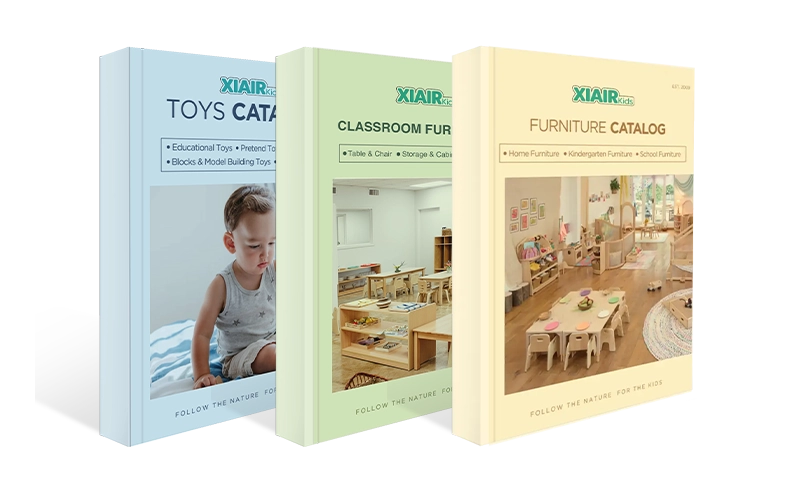
Receive a free catalog and custom layout to help you design your ideal classroom easily.
Benefits for parents:
- Peace of Mind: Parents need to know their children are in good hands. A daycare that prioritizes safety, communication, and nurturing care offers peace of mind that money can’t buy. When parents trust your facility, they can focus on work or daily responsibilities without constant worry. For anyone researching how to start a daycare that builds long-term trust, creating a safe and transparent environment is essential from day one
- Flexibility: Modern families lead busy lives with schedules that don’t always align with traditional care models. A daycare that offers flexible hours, part-time options, or after-school programs can be a game-changer for working parents. Flexibility makes your daycare more accessible and inclusive. If you’re learning how to start a daycare that fits real-life demands, offering adaptable scheduling is a key differentiator that families will appreciate.
- Financial Assistance: Cost is a major concern for many families. Offering or accepting financial assistance programs—such as government subsidies, income-based tuition, or scholarships—makes daycare more affordable and inclusive. This also opens your doors to a wider demographic. When considering how to start a daycare with accessibility in mind, understanding funding options and financial support systems is a smart and socially responsible step.
Steps on How to Start a Daycare
When planning how to start a daycare, it’s important to think of the process as more than just opening doors to children. It’s about building a safe, compliant, and engaging space that meets licensing requirements, appeals to families, and supports child development. The following steps will guide you through the essential stages, ensuring that your daycare is both legally sound and attractive to parents from day one.
1. Research Licensing
Before you enroll a single child, you must understand and comply with licensing requirements. Every state has its own set of rules, but certain core steps are universal in the process of how to start a daycare.
- Understanding Market Demand: Knowing the demand in your area helps you determine whether your daycare will fill a gap or struggle to compete. Analyze local population data, talk to parents, and connect with early childhood education networks. If your community has working families but few care options, you’re already on the right path toward starting a daycare that meets real needs.
- Competitor Analysis: Part of learning how to start a daycare is studying what’s already working. Visit local providers, observe their setups, and note their pricing, hours, and special programs. Identify what you can do differently—or better—to carve out your space in the market.
- State and Local Regulations: To legally start a daycare, you’ll need to pass health and safety inspections, maintain staff-to-child ratios, and fulfill training requirements. Getting this right early on prevents delays and builds trust with families from day one.

2. Choose the Right Location for Your Daycare
When planning how to start a daycare, location is a major factor. Your space should be convenient for parents, safe for children, and suitable for learning. Whether it’s a renovated home, a leased center, or a room in a community building, the facility must meet zoning laws and offer an environment that supports play, structure, and exploration.
Seek Out Tax Credits and Childcare Grants
Funding can be a barrier, but understanding how to start a daycare includes researching financial assistance options. Look into federal and state grants, small business loans, and childcare development subsidies. These resources can help offset costs related to licensing, staffing, and facility upgrades.
3. Get Your Daycare Supplies and Equipment Ready
When planning how to start a daycare, choosing the right supplies is about more than filling shelves—it’s about creating a safe, stimulating environment where children can learn and grow. Here are the key categories to prepare.
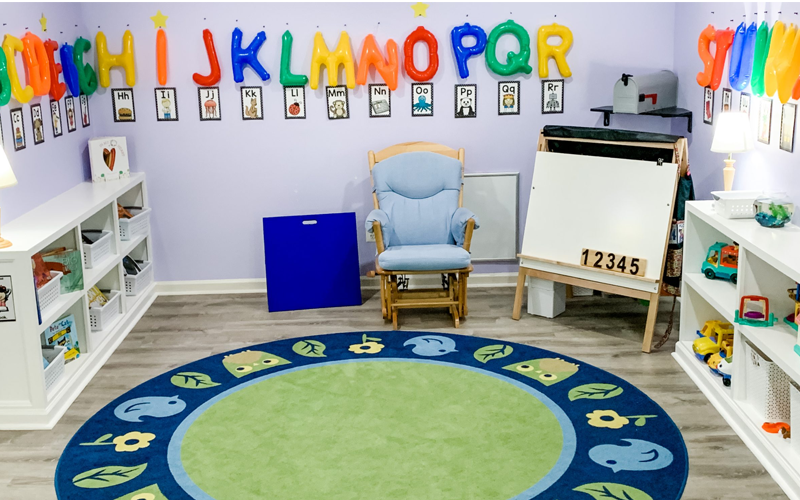
Safety Equipment – Includes outlet covers, safety gates, cabinet locks, corner guards, and childproof latches. These protect children from potential hazards while meeting licensing requirements.
Furniture – Age-appropriate tables, chairs, shelves, and nap mats that are sturdy, easy to clean, and sized for children’s comfort. Rounded edges help prevent injuries.


Educational Materials – Books, puzzles, flashcards, and learning games that promote cognitive development, language skills, and problem-solving. Choose durable, non-toxic items.
Toys and Play Equipment – Variety of toys for different age groups, including building blocks, dolls, ride-on toys, and outdoor play structures. Ensure all are safe, clean, and developmentally appropriate.


Art and Craft Supplies – Washable paints, crayons, child-safe scissors, paper, glue sticks, and other materials that encourage creativity and self-expression.
Health and Hygiene Items – Hand sanitizer, tissues, child-friendly soap, disinfectant wipes, and first-aid kits to maintain a healthy environment.
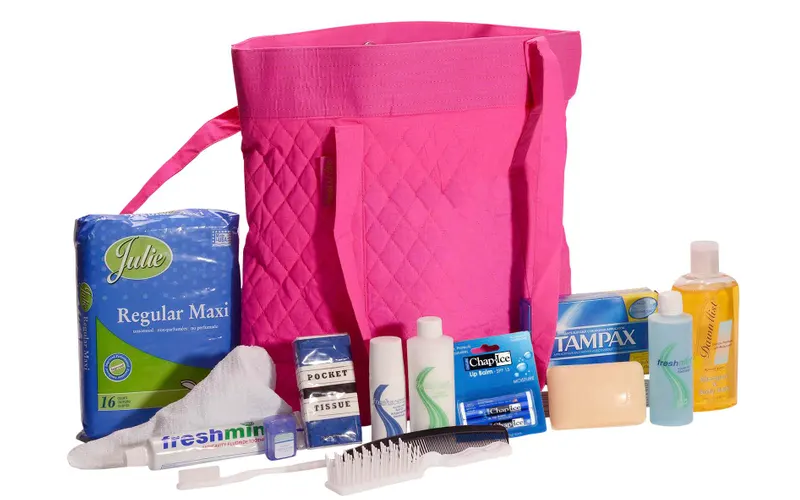

Kitchen and Mealtime Supplies – Child-sized utensils, plates, cups, and snack storage. If meals are provided, consider food prep tools and safety-compliant storage.
Storage Solutions – Clearly labeled bins, cubbies, and shelves to keep supplies organized and accessible, teaching children responsibility for their belongings.
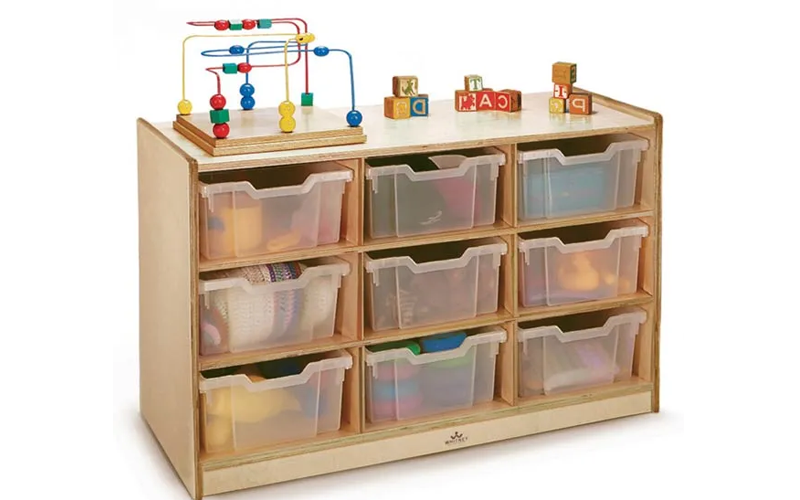
4. Building and Zoning Considerations
When exploring how to start a daycare, selecting and preparing the right facility is one of the first big challenges. The space you choose must not only be functional and welcoming but also meet legal standards and zoning requirements.
- Zoning Requirements: Before signing a lease or buying property, confirm that the area’s zoning laws allow for daycare operations. In residential neighborhoods, you may need a special-use permit, while in commercial zones, regulations are often clearer but still require formal approval. Always check with your local planning department to avoid costly mistakes.
- Space and Layout: Licensing agencies typically require a minimum square footage per child, and your design should allow for dedicated areas such as classrooms, nap rooms, dining spaces, and outdoor play zones. Well-planned layouts enhance safety, supervision, and learning efficiency.
- Accessibility: Your building must comply with the Americans with Disabilities Act (ADA), providing safe access for children, parents, and staff with mobility challenges. This includes ramps, wide hallways, and accessible restrooms.

Receive a free catalog and custom layout to help you design your ideal classroom easily.
5. Choose a Business Structure That Supports Growth
When planning how to start a daycare, choosing the right business structure is a critical step. It determines how you’ll handle taxes, protect your personal assets, and scale your operations.
A sole proprietorship is the simplest option, but it offers no liability protection—meaning your personal assets could be at risk if issues arise. Many daycare owners prefer a limited liability company (LLC) because it separates personal and business finances, offers tax flexibility, and is relatively easy to maintain.
For those planning to expand or attract investors, forming a corporation (S-corp or C-corp) provides stronger legal protections but requires more administrative work. If your mission is community-focused, a nonprofit organization may be worth considering, especially for grant eligibility, though it comes with strict regulations.
Your choice should align with your long-term goals, whether that’s operating a small home daycare or building a multi-location brand. Consulting with a legal or financial professional ensures your structure supports both immediate needs and future growth. In the process of starting a daycare, this decision lays the legal foundation for lasting success.

6. Hiring Qualified Staff
Staff are the heart of your daycare. Even with the best curriculum and facilities, success depends on the people who interact with children daily.
- Core Hiring Criteria: Look for candidates with relevant childcare certifications, early childhood education backgrounds, or experience working with young children. All hires must pass comprehensive background checks to ensure safety.
- Ongoing Training: Once hired, staff should receive regular training in CPR, first aid, child development, and conflict resolution. Continuous professional development keeps skills sharp and ensures your daycare meets evolving standards in early childhood care.
- Staff-to-Child Ratios: Maintaining proper ratios is critical for safety, supervision, and meeting licensing rules.
| Age Group | Typical Ratio Requirement |
|---|---|
| Infants | 1:3–4 |
| Toddlers | 1:4–6 |
| Preschoolers | 1:7–10 |

7. Establishing Health and Safety Protocols
When considering how to start a daycare, one of the most critical foundations is a comprehensive health and safety plan. Parents entrust you with their children’s well-being, and your ability to protect them directly impacts your reputation, licensing compliance, and long-term success. A strong set of health and safety protocols should cover daily operations, emergency preparedness, and preventive measures to create a secure environment for every child.
Hygiene Practices
Cleanliness in a daycare is more than just tidiness—it’s a vital defense against illness. Implement daily cleaning schedules for toys, books, tables, and high-touch surfaces like doorknobs. Restrooms should be sanitized multiple times a day, and bedding for nap time should be washed regularly. Children should be encouraged to wash their hands before meals, after bathroom use, and after outdoor activities. Staff must model good hygiene habits to reinforce these routines.
Emergency Preparedness
A well-prepared daycare has clearly documented plans for various emergencies, including fires, severe weather, power outages, and intruder situations. Post evacuation routes in each room and practice drills monthly so both children and staff know the correct procedures. Keep emergency kits stocked with flashlights, blankets, bottled water, and essential medical supplies. Every staff member should be trained in CPR and first aid, with certifications kept up to date.
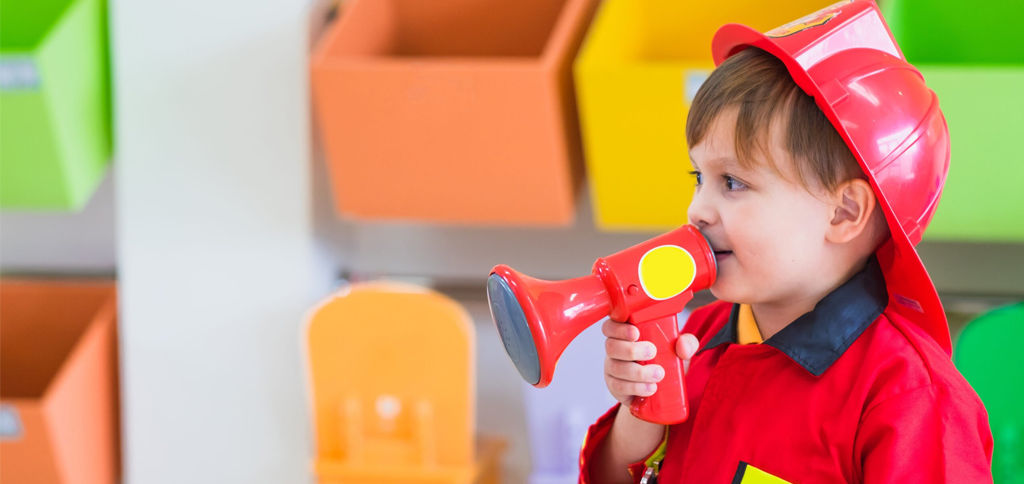
Health Policies
Clear and consistent health policies protect the entire daycare community. These policies should outline when children must stay home due to illness, how staff will manage allergies, and the procedures for administering medication safely. Require medical authorization forms from parents and keep records secure but accessible. It’s also wise to maintain a list of emergency contacts and local healthcare providers.
Safety Equipment and Inspections
From outlet covers to secure gates, the physical safety of the daycare space must be regularly assessed. Conduct monthly safety inspections to check for broken toys, loose fixtures, or other hazards. Outdoor play areas should be fenced, and equipment inspected for wear and tear. Smoke detectors, carbon monoxide alarms, and fire extinguishers should be tested according to manufacturer recommendations.

8. Designing an Age-Appropriate Curriculum and Daily Activities
When learning how to start a daycare, one of the first things parents will ask about is your curriculum. A well-structured, age-appropriate plan shows families you care about more than just supervision—you’re committed to growth and learning.
Your curriculum should adapt to each age group:
- Infants – Focus on sensory play, music, gentle movement, and bonding time.
- Toddlers – Introduce colors, shapes, counting, and language-building activities.
- Preschoolers – Add early literacy, math skills, cooperative games, and creative projects.
A balanced daily routine might include:
- Morning circle time to build community.
- Structured lessons or guided play.
- Outdoor activities to support physical health.
- Rest periods for recharging.
Mixing predictable schedules with varied activities keeps children engaged and helps them feel secure.

Receive a free catalog and custom layout to help you design your ideal classroom easily.
9. Marketing Your Daycare Business
Understanding how to start a daycare also means knowing how to share your story with families. Marketing is about building trust as much as increasing visibility.
You can build awareness by creating a professional website that shows your space, introduces your staff, and explains your educational philosophy. Social media works well for sharing glimpses of daily life and communicating with parents. Offline efforts, such as participating in community events or hosting open houses, give parents the chance to connect with you in person.
The key is consistency. Whether online or face-to-face, every interaction should reflect the warmth, safety, and professionalism that define your daycare.
10. Setting Prices and Rates
Pricing is one of the most sensitive parts of running a daycare. Set your rates too low and you may struggle to cover costs. Set them too high and you risk losing potential families.
To find the right balance, research competitors in your area and consider what is included in their pricing. Be clear about what parents can expect for their money, whether that means meals, educational materials, or extracurricular activities. Some daycares offer flexible packages such as part-time care or sibling discounts to make services more accessible.
Transparent communication about fees builds trust, and periodic reviews ensure your rates remain fair and sustainable.

11. Get Licenses and Permits
One of the most important steps in how to start a daycare is securing the proper licenses and permits. Without them, you risk legal issues and the loss of credibility with parents.
Start by contacting your state’s childcare licensing office to learn the exact requirements. These often include background checks for staff, proof of adequate space, and passing health and safety inspections. Depending on your location, you may also need local business permits, zoning approvals, and fire safety certifications.
Keeping track of renewal dates and compliance checks is essential since most licenses must be updated regularly.
12. Design Your Daycare Center
The design of your daycare is more than just decoration, it directly affects safety, learning, and how parents perceive your professionalism. When considering how to start a daycare, invest time in planning a space that is functional, safe, and inspiring.
Step 1: Create Functional Zones
Organize the space to support different activities and learning styles. Common zones include:
- Quiet Area for reading and rest
- Active Play Area for gross motor activities
- Creative Corner for art and craft projects
- Outdoor Space for physical play and nature exploration
A clear layout helps children transition between activities smoothly and allows staff to supervise effectively.
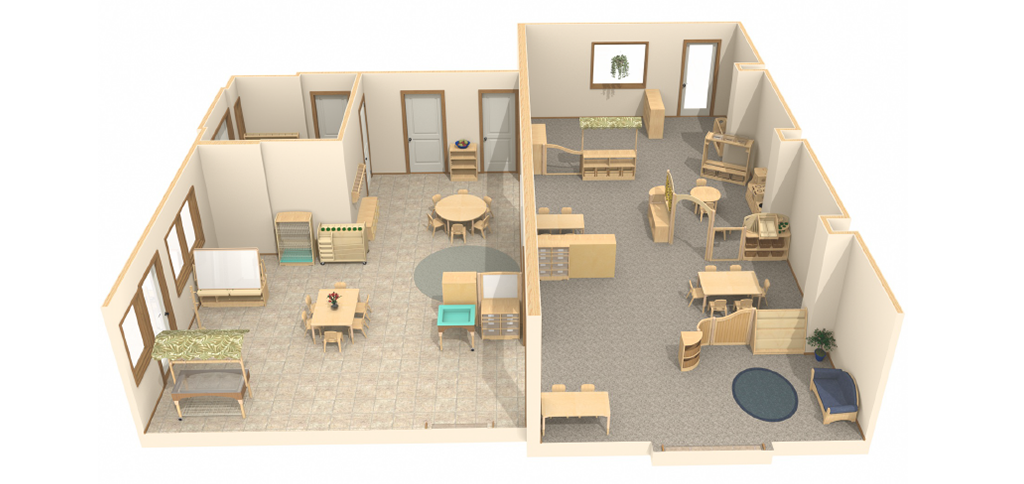
Step 2: Prioritize Safety and Accessibility
Children’s safety should be built into the design from day one. Consider:
- Child-sized furniture that is sturdy and easy to clean
- Outlet covers, secure shelving, and safety gates
- Non-slip flooring and rounded edges on furniture
Step 3: Build a Welcoming Atmosphere
The environment should make children feel excited to come each day. Use:
- Bright, cheerful colors balanced with calming tones
- Natural light wherever possible
- Interactive wall elements such as educational posters or sensory boards
A well-designed space communicates care, attention to detail, and professionalism to visiting parents.

Step 4: Plan for Growth
If your goal in how to start a daycare includes expansion, leave room in your layout for future needs. This could mean extra storage space, a multipurpose room, or the flexibility to add new learning areas later.
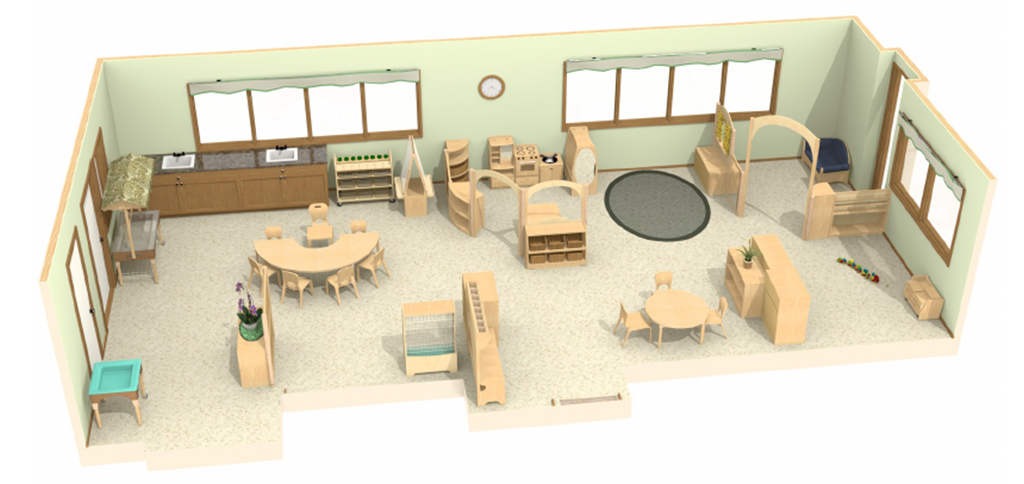
Inclusivity and Diversity in Your Daycare
When learning how to start a daycare, inclusivity and diversity should be central values. A truly child-first daycare welcomes children of all abilities, backgrounds, and cultures, ensuring each one feels safe, respected, and valued. By embracing diversity, you not only meet ethical and legal standards but also create a richer learning environment that benefits every child.
Creating a Culturally Respectful Environment
Diversity in culture brings richness to a daycare’s daily life. This can be reflected through the books you read, the music you play, the holidays you acknowledge, and even the meals you offer.
Encouraging children to share their cultural traditions fosters understanding and empathy from a young age. For example, you might have “culture days” where families share songs, clothing, or stories from their heritage. This makes every child feel seen and valued, while also teaching others to appreciate differences.
When considering how to start a daycare, building cultural respect into your policies and curriculum ensures inclusivity is part of your program’s DNA.
Promoting Equality and Belonging
Equality in a daycare setting means every child has the same access to resources, attention, and opportunities to grow. Belonging goes a step further—it’s about making sure each child feels they are an important part of the community.
This can be achieved through balanced participation in activities, representation in learning materials, and encouraging friendships across differences. Staff should model inclusive behavior, using positive language and addressing biases when they arise.
A daycare where children feel equal and included prepares them for the diverse world they will encounter beyond their doors. In the process of how to start a daycare, this commitment to equality will help create an environment that is not only compliant but also truly transformative for young minds.

Receive a free catalog and custom layout to help you design your ideal classroom easily.
Conclusion
Starting a daycare is more than a business venture—it is a commitment to creating a safe, nurturing, and enriching environment for children while building a service that families can rely on. From researching licensing requirements and choosing the right location to designing your curriculum, hiring qualified staff, and establishing strong health and safety protocols, every decision plays a role in your long-term success.
Understanding how to start a daycare means going beyond the basics. It requires thoughtful planning, financial awareness, and a clear vision for the type of care you want to provide. By focusing on inclusivity, maintaining high-quality standards, and building strong relationships with families, you can set your daycare apart in a competitive market.
While the journey involves effort, regulatory compliance, and investment, the rewards are significant. You have the opportunity to influence young lives, support your community, and create a sustainable business that grows with you. Whether you begin with a small home-based operation or dream of expanding into a full childcare center, the foundation you build today will shape your success tomorrow.
FAQs
How much money do you need to start a daycare?
The cost of starting a daycare depends on location, size, and licensing requirements. On average, home-based daycares may require $2,000 to $10,000 in startup expenses, while larger centers can cost $50,000 or more. When learning how to start a daycare, factor in licensing fees, equipment, supplies, insurance, and initial marketing.
How profitable is owning a daycare?
A well-managed daycare can be highly profitable. Profit margins often range from 15% to 35%, depending on enrollment capacity, pricing strategy, and operational efficiency. Daycares that maintain high occupancy rates and offer premium services tend to achieve stronger profitability.
How much is insurance for a daycare?
Daycare insurance costs vary but often range from $450 to $2,000 per year for home-based operations, and higher for larger facilities. Policies typically include general liability, property coverage, and sometimes professional liability. Insurance is an essential part of how to start a daycare legally and safely.
How much do daycares charge per day?
Daily rates depend on location, age group, and services offered. In the U.S., daycare costs often range from $30 to $60 per day for full-time care, with urban areas tending toward the higher end. Specialized programs or extended hours can increase rates.
What qualifications do you need to start a daycare?
Qualifications vary by state, but most require the owner or primary caregiver to have training in early childhood education, CPR and first aid certification, and a clean background check. Some states also require a certain number of hours in childcare-related coursework or prior experience. When researching how to start a daycare, always check your state’s specific licensing requirements to ensure you meet the necessary educational and safety standards.

